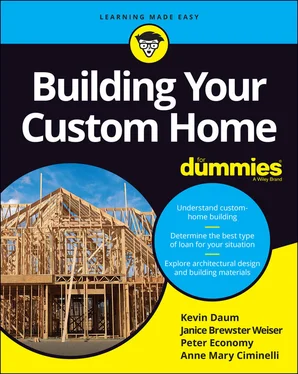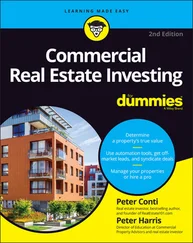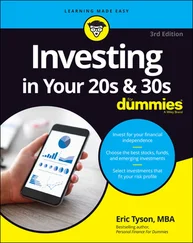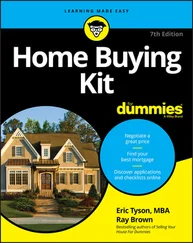If you’re not sure where to go first, you may want to start with Part 1. It gives you all the basic information you need to understand the process of building a custom home. From there, you can skip to the chapters that cover the subjects that seem most fuzzy to you now. Rest assured that when you’ve read those chapters, you’ll have a better grip on the home-building reality.
Part 1
Getting Started with Custom-Home Building
IN THIS PART …
Find a general overview of the custom-home-building process.
Get and stay organized.
Acquire the right piece of land and pay for it.
Decide on the type and style of home you want.
Chapter 1
The Custom-Home Process in a Nutshell
IN THIS CHAPTER
 Getting ready for the custom-home process
Getting ready for the custom-home process
 Considering the finances
Considering the finances
 Understanding all the steps and time involved
Understanding all the steps and time involved
 Deciding whether to be your own contractor
Deciding whether to be your own contractor
Many people, at some time in their lives, want to own a custom home. Some people are attracted to the thought of designing and creating something big from scratch. Others want to live in a new home that meets their specific needs instead of a house that looks like every other home on the block. Some people begin the custom-home process by accident when they find a piece of land that inspires them.
According to the National Association of Home Builders, more than 20 percent of new homes in the United States are custom homes. That means more than 175,000 custom homes are built every year. For each person building a custom home, several people are in the process of designing one. So, you’re in excellent company with many people dreaming about moving into a home designed and built just for them. Custom homes are popular, so tons of resources are available to help you through the process.
But, like Rome, your new home won’t be built in a day. The custom-home process is lengthy, emotional, and expensive, without much consistency to it. Face it: Custom homes require custom work, and plenty of it! This work makes building a custom home challenging, and yet that extra work is what makes your project unique to you. You may feel overwhelmed at times, but by trusting in the experience of the professionals you engage in your project and keeping this invaluable book by your side, you can have a manageable project that delivers the custom home you’ve been dreaming of.
Where Do You Start? Preparing to Build Your Home
Believe it or not, the custom-home process really has no standard starting place. There are some logical entry points, such as finding land, but most often people start with a designed house they’ve had in mind for a long time. Where you start isn’t important; what is important is for you to make sure that you’ve taken all the necessary steps to give yourself the best chance for success. The following list includes some questions you need to consider before committing time and money to this project:
Where do I want to live?
How long do I want to live in this house?
How will I find land? (See Chapter 3.)
How much money do I have to spend on this project? (See Chapters 8, 9, and 10.)
How much extra time do I have to put into this project? (See Chapter 2.)
How do I find the right resources to design my house? (See Chapter 4.)
How do I find the right resources to build my house? (See Chapters 2and 7.)
Is my relationship strong enough to survive this process? (See your therapist.)
Don’t make the assumption that any one person can give you all the information you need to prepare for this process. Contractors have one perspective on the process, and architects may have a completely different one. Do your homework and interview as many people as you can who have been involved in the process. By talking to professionals and consumers and asking them to share their experiences, you can begin to get a clearer picture of the process ahead.
 Kevin recommends to all his clients that they get organized before beginning the process. Sit down and assess how much time you can put aside each week to focus on the project. Consider making a specific day each week your day for working on custom-home stuff. Also, clear a space in your office or den to be “Custom-Home Central.” This way you always know where to find what you need for your project. (You can find other organizing tips for your project in Chapter 2.)
Kevin recommends to all his clients that they get organized before beginning the process. Sit down and assess how much time you can put aside each week to focus on the project. Consider making a specific day each week your day for working on custom-home stuff. Also, clear a space in your office or den to be “Custom-Home Central.” This way you always know where to find what you need for your project. (You can find other organizing tips for your project in Chapter 2.)
Money Makes the World Go Round: Paying for Your Home
We talk a lot about money in this book, and with good reason. Custom homes require plenty of it. Your new home will probably be the most expensive item you’ve ever purchased. In fact, it may be the most expensive item you’ll ever buy in your entire life. Custom homes cost more than production or tract homes because the materials aren’t bought in quantities and the labor hired includes individual craftspeople. The results are worth it, however, and will last lifetimes.
Many people find it a challenge to get past the large checks they’re writing. If you decide to use an architect, even the first check to the architect will probably exceed the biggest check you’ve ever written. The key to success with money in a custom-home project is putting it in the right perspective. If your budget is $500,000, then what each piece costs isn’t important as long as all the pieces combined total $500,000 or less.
 When you buy a new car, you don’t argue over how much you spent for the alternator or the exhaust system. You look for the car to meet the price of your overall budget. Use the same logic when buying your custom home. Look for the best price on each item, but look at it in perspective to the entire budget. You’ll do better on some items and worse on others, but as long as it fits your finances, you’re in good shape.
When you buy a new car, you don’t argue over how much you spent for the alternator or the exhaust system. You look for the car to meet the price of your overall budget. Use the same logic when buying your custom home. Look for the best price on each item, but look at it in perspective to the entire budget. You’ll do better on some items and worse on others, but as long as it fits your finances, you’re in good shape.
Asking yourself about affordability
Of course, you’ve heard horror stories about custom-home projects that have gone seriously over budget. They go over budget for many reasons, but usually the main culprit is that the homeowners didn’t spend enough time determining what they can afford. Obviously, if you’re building well below your means, going over budget is easily rectified by using your own cash. But running out of money is the number-one cause of custom-home disasters. Before you start the custom-home process, you seriously need to consider the following:
What can you physically pay? Take stock of your cash on hand, equity in real estate, and available cash from other resources. Make a firm decision on how much money you’re willing to put toward the project. Chapter 8can be a big help. You also need to get a rough idea of how much borrowing power you have to help establish a limit for your budget when added to your available cash. Make sure you consult with a financial adviser. We provide tools and Kevin’s expert financing assessments in Chapters 9and 10.
Читать дальше

 Getting ready for the custom-home process
Getting ready for the custom-home process Kevin recommends to all his clients that they get organized before beginning the process. Sit down and assess how much time you can put aside each week to focus on the project. Consider making a specific day each week your day for working on custom-home stuff. Also, clear a space in your office or den to be “Custom-Home Central.” This way you always know where to find what you need for your project. (You can find other organizing tips for your project in Chapter 2.)
Kevin recommends to all his clients that they get organized before beginning the process. Sit down and assess how much time you can put aside each week to focus on the project. Consider making a specific day each week your day for working on custom-home stuff. Also, clear a space in your office or den to be “Custom-Home Central.” This way you always know where to find what you need for your project. (You can find other organizing tips for your project in Chapter 2.) When you buy a new car, you don’t argue over how much you spent for the alternator or the exhaust system. You look for the car to meet the price of your overall budget. Use the same logic when buying your custom home. Look for the best price on each item, but look at it in perspective to the entire budget. You’ll do better on some items and worse on others, but as long as it fits your finances, you’re in good shape.
When you buy a new car, you don’t argue over how much you spent for the alternator or the exhaust system. You look for the car to meet the price of your overall budget. Use the same logic when buying your custom home. Look for the best price on each item, but look at it in perspective to the entire budget. You’ll do better on some items and worse on others, but as long as it fits your finances, you’re in good shape.










